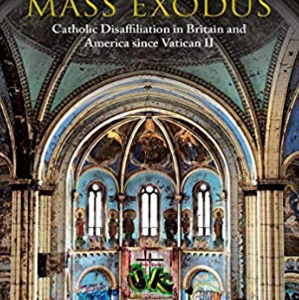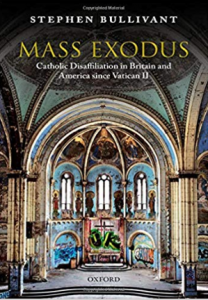
Exodus crisis facing Catholic Church

The Second Vatican Council opened in 1962 by Pope John XXIII. With the prophecy that “a new day is dawning on Church, bathing her in radiant splendor”
The identity of the Catholic media, about strict adherence to the church’s teachings, especially on marriage and sexual morals or is it a more liberal approach, kind to human weakness, quick to forgive and forget, at stake is the future stimulus of Catholicism’s moral authority at 1.3bn, the world’s largest Christian community.
The progressives and traditionalists are clashing over the root cause of clerical sexual abuse, as the traditionalist insist that the root cause is gay men in the priesthood. The liberals, blame traditionalist “ clericalism” including a sense of entitlement and enforced celibacy.
Stephen Bullivant an expert in social-scientific studies of religion at St Mary’s University, London, the biggest crisis in the church is the church is the rate at which members are lapsing.
With the rapid decline of once vibrant expanding parishes, and closure of churches in the US only 15 per cent of cradle Catholics attend weekly mass and 35 per cent of them admit to Catholic identity. In UK, the figures are worse only 13 per cent attend weekly mass and 37 per cent say they no longer believe in religion of any kind.
In the US adult population of 250m, there are 87m cradle Catholics, 30m of whom have lapsed. In the UK adult population of 50m, there are 7.2m cradle Catholics, of whom 3.2m are lapsed. Mass Exodus supplies global figures in Western countries, especially in Germany, where 216, 078 members left the church last year.
The largest Catholic communities are to be found in the developing world, Latin America is home to 43 per cent of the faithful. Bullivant reveals, through a we4lath of fascinating testimonies, a wide span of reasons for mass exodus. Informants who defected from the 1970s tend to cite the bans on birth control, sex before marriage, divorce and homosexuality. Boredom with church services, dislike of post-Vatican II and skepticism about doctrine, dislike of particular pastors, bad experiences in the confessional box, rejection of the afterlife and the pedophile priest scandals.
Several dropouts, particularly among women, Hispanics and African-Americans in the US, include those who felt let down by the church in an hour of need. In the US 15 per cent of disaffiliates have gone to other Christian groups, 2 per cent to other, non-Christian religions, and 17 per cent to no religion.
The Last pope Benedict XVI often said it was better to have a smaller church that would pass on the faith undiluted but Pope Francis seeks to bring back the lapsed by being non-judgmental include field station for the spiritually weak and injured. When asked about the status of gay Catholics, he said: “ Who am I to Judge?”.
In the US Exit polls going back to 2004 reveal that a majority of Catholics support the winners of presidential elections, and by nearly the same margin as the electorate as a whole. In 2016 election Catholics not only backed Donald Trump, but gave him a larger share of their votes than the total body of voters.
The defections might well affect the outcome of the 2020 US election. Abortion, Capital punishment ( recently denounced by the Pope), same-sex marriage, LGBT issues opposition to which once defined Catholic Identity, now find Catholics deeply divided, both religiously and politically.
Mass Exodus: Catholic Disaffiliation in Britain and America since Vatican II by Stephen Bullivant, Oxford University Press, £25, 336 pages.
